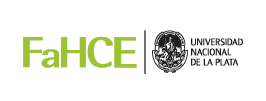Director/a: Scharagrodsky, Pablo
Co-director/a: Saraví, Jorge
Integrantes:
Scharagrodsky, Carina Judith
-
Martínez, Silvia Estela
-
Levoratti, Alejo
-
Fittipaldi, Gerardo
-
Bonamy, María Belén
Becarios/Tesistas: Kopelovich, Pablo - López, Nicolás Sebastián
Colaboradores/as: Bertolotto, Antonella
Proyecto de Investigación y Desarrollo (PI+D) financiado por: Universidad Nacional de La Plata (UNLP)
Código: H845 - Fecha de inicio: 01/01/2018 - Fecha de finalización: 31/12/2021
Lugar de trabajo: AEIEF
ResumenEl siguiente proyecto de investigación tiene como objetivo analizar a la prensa escrita como un actor social y político y, también, como un espacio de producción cultural y fuente de información histórica (Kircher, 2005; Borrat, 1989;Qués, 2013) que puso en circulación, distribución, transmisión, producción y apropiación en un espacio y tiempo determinado un conjunto complejo y heterogéneo de significados vinculados con el "cuerpo educado" en y a partir de los Deportes, la Educación Física y demás propuestas de educación corporal. La prensa, no sólo conceptualizó a los ejercicios físicos y a los cuerpos en movimiento definiendo prescripciones sobre el cuerpo orgánico y su "normal" funcionamiento, sino muy especialmente abordó y, de alguna manera, construyó, temas y problemas que excedieron al universo biológico, condensando diversos sentidos -muchas veces ambiguos, paradójicos y contradictorios- sobre la decadencia física, el deterioro biológico y la degeneración racial (Reggiani, 2014); la nacionalidad, el progreso somático y la patria; la argentinidad lo foráneo y un tipo esperable de corporalidad (Archetti, 2003); la sexualidad, la emocionalidad y el deseo (Méndez, 2011; Anderson, 2014); cierto tipo de feminidad, masculinidad y determinada moral(vigor, fortaleza, honor, rectitud, templanza, cobardía, pereza, indolencia, recato, decoro, pudor o elegancia en losmovimientos) (Scharagrodsky, 2016); la salud, la higiene y la enfermedad (Armus, 2007); la normalidad somática, la anormalidad física y el desvío (Miranda y Vallejo, 2005); la belleza, la fealdad física y su arbitraria relación con la bondad y la maldad, entre un sin número de tópicos. En este contexto, focalizará la atención en los Profesores de Educación Física y los médicos deportólogos como grupos ocupacionales que a través de ciertos enunciados legitimaron susoficios y cuyas injerencias institucionales estuvieron vinculadas directa o indirectamente con el universo escolar yeducativo (Scharagrodsky, 2015; Reggiani, 2016). ¿Qué significó convertirse en un cuerpo sano y educado desde la prensa escrita será una de las preguntas a indagar. Entre la prensa a analizar focalizaremos la atención en tresrevistas. Del campo específico la Revista de la Educación Física del INEF, del campo educativo la Revista El Monitor dela Educación Común y del campo bio-médico, la Semana Médica.
Palabras clave: Deporte - Educación Física - Physical Education - Sports - Prensa - Press
AbstractThe following research project aims to analyze the written press as a social and political actor and also as a space of cultural production and source of historical information (Kircher, 2005 ; Borrat, 1989; Qués, 2013) that put into circulation, distribution, transmission, production and appropriation, in a certain space and time, a complex and heterogeneous set of meanings linked to the 'educated body' in and from Sports, Physical Education and other proposals of corporal education. The press not only conceptualized physical exercises and bodies in motion defining prescriptions about the organic body and its 'normal' functioning, but very specially approached and somehow constructed, issues and problems that exceeded the biological universe, condensing different meanings - many times ambiguous, paradoxical and contradictory - about physical decay, biological deterioration and racial degeneration(Reggiani, 2014); Nationality, somatic progress and homeland; The "argentinism", the foreign and an expected typeof corporality (Archetti, 2003); Sexuality, emotionality and desire (Méndez, 2011, Anderson, 2014); A certain type of femininity, masculinity and certain morality (strength, strength, honor, straightness, temperance, cowardice, laziness,indolence, modesty, decorum, modesty or elegance in movements) (Scharagrodsky, 2016); Health, hygiene and disease(Armus, 2007); Somatic normality, physical abnormality and diversion (Miranda and Vallejo, 2005); The beauty, the physical ugliness and its arbitrary relationship with goodness and evil, among a myriad of topics.In this context, the project will focus its attention on physical education teachers and deportologists as occupational groups that through certain statements legitimized their professions and whose institutional interference were directly or indirectly linked to the school and educational universe (Scharagrodsky, 2015, Reggiani , 2016). What did it mean to become a healthyand educated body. This will be one of the questions to investigate trough the written press. We will focus the attentionin three magazines of the written press in order to analyse the topic: from the specific field, the Journal of PhysicalEducation of the INEF, from the educational field, the Journal of the Monitor of Common Education and from the bio-medical field, the Medical Week.
Keywords: Deporte - Educación Física - Physical Education - Sports - Prensa - Press
Disciplinas
Educación
Ciencias Sociales
Campos de aplicación
Educación
-
Ciencias Sociales
Especialidad: Pedagogía











